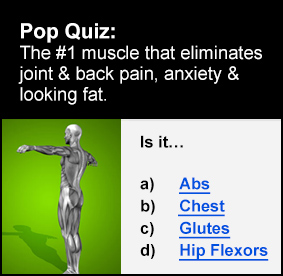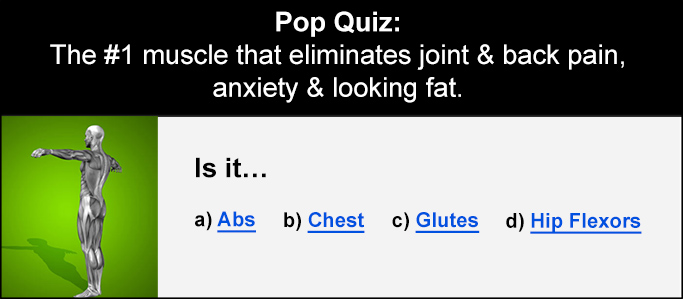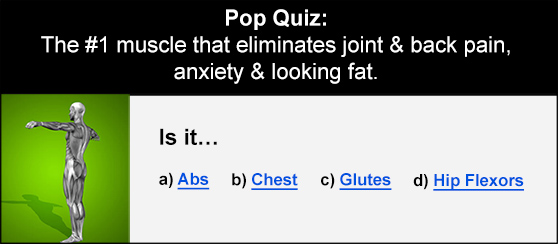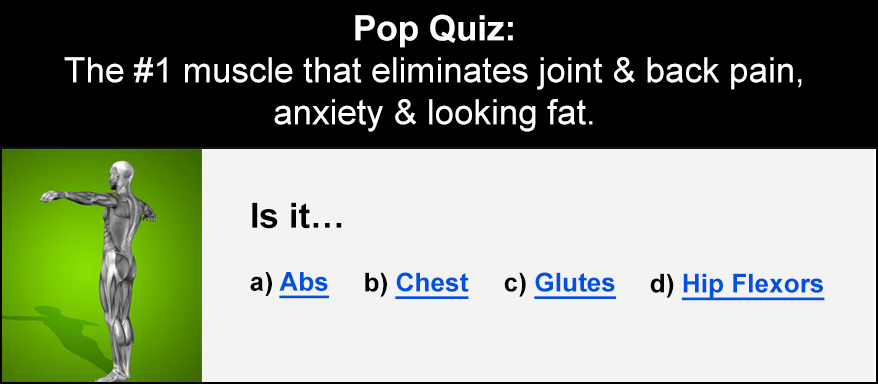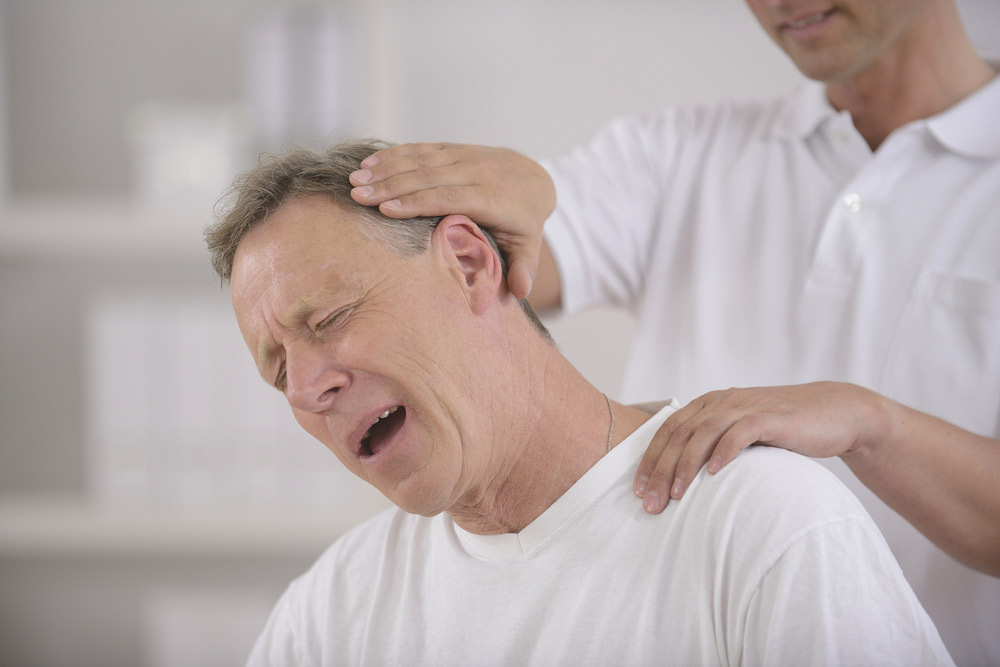
The aging process comes with many unavoidable changes. These aren’t all negative – experience and life lessons “under your belt” are great for improving yourself.
However, common joint risks over 40 are less positive – they’re not necessarily inevitable, but your risk factors do shoot up during this period. Today we’re going to discuss the 3 most common joint risks.
If you’re interested in staying healthy and avoiding joint pain, read on – we’ll provide explanations and solutions to keep your joints healthy over 40.
1. Back
The lower back is the single most injured area among humans with 80% of everyone experiencing debilitating lower back pain. This is a serious issue that can affect everything from your exercise performance to the simple ability to walk.
With the spine being involved in everything you do; injury here will show up everywhere in life. The importance of reducing back injury risk is key and it’s why we do exercise for the abdominal muscles to keep the spine safe.
Injury here is often year-long, with multi-year injuries being common and a serious risk of psychological damage. Clearly, this is a problem worth protecting yourself from!
Solutions and precautions
Developing the muscles that surround the spine is key to getting the most out of your training and staying healthy as you get older.
The key muscles affecting the health of the spine in people over 40 are the abdominals, buttocks, and spinal erectors (especially the multifidus).
Abdominal muscles
Abs aren’t just for looking good. They’re for stabilising the spine and providing a force at the front of the body, which stops you from hyperextending in the spine. This reduces excessive strain in the lower back and keeps injury risk down.
This isn’t just about crunches, either. You should be developing core strength in all 3 planes: sagittal (forwards and backwards), lateral (sideways), and transverse (rotational).
Here are a few key exercises you can use to build a well-rounded core:
- Sagittal: Lying leg raises, hanging knee tucks, and 8-point planks
- Lateral: side bends, hanging oblique crunches, and side planks (with or without dips)
- Rotational: Dead bugs, bird dogs, rotating lunge, and side plank tuck rotations
Buttocks
Once again, this isn’t a show muscle. The buttocks are key for supporting the stability of the lower spine and taking stress off of muscles like the quadratus lumborum.
This ensures that the lower back is reliably loaded without excessive stress or strain. It keeps the lower back stable, hips active, and interacts with the pelvic floor to keep you stable.
The glutes are also a key source for generating force in the body and they control the hinging of the hips. This is a key movement in all of human life and learning to use the hips effectively will reduce the risk of manual handling injuries, as well as exercise performance and safety.
There are a few key exercises you can practice keeping the buttocks strong and practice these movements:
- Hip hinge pattern: a great way to move better and understand how your body works.
- Paused RDL with a light barbell/set of dumbbells: key movement focus and strengthening the lower back/glutes all at once.
- Glute bridge: a key strengthening exercise. Make sure to keep your core tight and stable throughout, focusing on clenching the buttocks.
- Good morning: similar to the RDL, focus on keeping the core tight and pushing the hips back on the way down, then squeezing the butt to bring the chest back to standing.
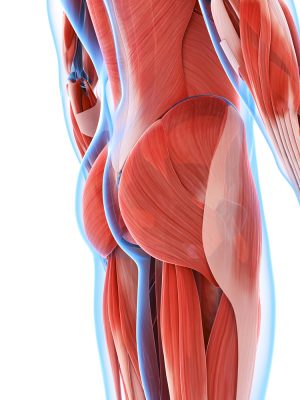
Multifidus and spinal erectors
Multifidus wastage is a common factor in lower back pain and is a serious risk for a cycle of weakness and injury into the future.
Keeping the back engaged using the exercises mentioned above can maintain spinal erector strength and keep you in control of your back. This is a simple and effective way to improve your back health without excessive loading.
This is a small, easily damaged muscle and doesn’t take too much work to improve. A little consistent exercise can make a serious difference – combining core and hip/back exercise will likely be enough.
2. Elbow
Tennis elbow might be in your future whether you’re into tennis or not.
Elbow injuries are common because of the repetitive nature of many elbow movements. These are often also met with frozen elbows and limited movement.
This can be a real concern since many of the things we do with our time involve movement in the arms. You don’t realise how much you use your elbows until it hurts every time you do!
Solutions and precautions
There are two simple steps to producing better elbow health that you can do by yourself, though a medical assessment can make a significant change to your results.
First, loosen off the tight muscles surrounding the elbow. This can easily inhibit movement and produce pain in normal ranges. This should involve stretching the muscles that cross the shoulder and bicep, as well as the longer head of the tricep.
These all meet at the elbow where tightness can cause significant problems. This is a concern since uneven or excessive demands on the joint can easily lead to pain – both mechanical and nervous.
Joint balance is a single change that can rapidly improve your wellbeing and reduce the risk of pain during everyday activity.
3. Knee
The knee is key for walking and most other physical activity. It hinges so many times in a day that you’ve probably completely ignored it until it starts to hurt.
Knee injuries come from poorly-managed posture and impact, most of the time. However, they can also occur in response to slips and stumbles, which you can’t predict.
The solution with knees is to make sure that they’re well-prepared for life and stabilised by the muscles of the thigh, hips, and partially by the calves.
Solutions and precautions
Strong legs and hips produce healthy, durable knees. Exercise through the legs is a key way of strengthening both the muscles and tendons to support the knee.
Hip exercises like the Romanian deadlift and back extension are great ways to develop knee-hip strength and develop the muscles that control the knee (such as the buttocks). These ensure effective posture of the knee and can contribute to better movement patterns.
Strengthening the thigh muscles with exercises like reverse lunges, split squats, and Bulgarian split squats are also important. These replicate the demands of real life and can be used to strengthen the hips or improve knee posture to reduce injury risks.
If you have a specific problem (such as the knees “falling inwards” – or knock knees), it’s possible to attach a resistance band to the knee to work against. This is a great way of getting the most from your exercise.
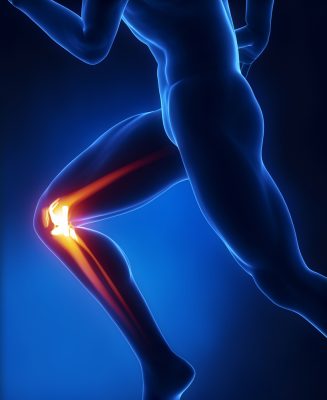
Tips To Protect Yourself From Knee Injury
Strength During Youth
Strengthening the joints – both the muscles and connective tissues – during youth is one way of saving yourself hassle in the future.
This doesn’t mean when you’re 18 – it means right now. Whatever age you are, avoiding problems is the fastest and most certain way of dealing with injury. This means effective strength and mobility exercise on both sides of every joint.
Reducing your activity levels is often a factor in joint risks getting worse, and inactivity only leads to bad habits and insecure joints. Active, strong, powerful individuals are less at-risk of falls, fractures, and joint injury overall.
Maintain light-medium exercise as you get older. This ensures you stay healthy and strong as you age. A well-rounded approach to physical activity and exercise ensures that your joints and movements are healthy for the long-term.
This is key to preventing the onset of joint injury and illness, such as osteoporosis and osteoarthritis.
Diet Is About Maintenance
The different foods you eat are key to keeping your joints healthy. They’re the raw materials that repair the tissues around joints and keep them in working order.
Protein is a key concern, since it is a huge part of the building blocks of muscle and tendons/ligaments. This also overlaps with the consumption of vitamins B and C, which are key for muscle and tendon health respectively.
Vitamin D, calcium, and potassium are also key for joint health since they’re essential for bone strength. Weak bones run into serious degradation or fracture risks, which can significantly compromise your health and wellbeing.
If Anything Starts Going Wrong, Work On It.
This is a simple one: if you start noticing problems, you should solve them immediately. Go to your doctor and make sure to strictly adhere to any changes they need you to make.
Solving problems before they make a difference to your life is the best way to stay healthy and keep your joints in great shape.
This also extends to stretching, mobilising, and staying active. These all prevent problems before they set in and can prevent you from ever having to deal with joint injuries. Make sure to stretch/train both sides of a joint to maintain balance and develop better posture.
Final Thoughts
These 3 joints – the lower back, elbow, and knee – are crucial for your quality of life.
Injury in any of these areas can significantly change how you experience your life. It’s easy to be miserable when everything hurts, and you feel like you’re falling apart. Preventing these common joint injuries over 40 can keep you looking, feeling, and moving at your very best.
Aging isn’t optional but aging well is – it comes from taking care of yourself and following the tips we’ve discussed above.
Put these to work in your own life and stay active. It’s the best way to live your best life over 40.


